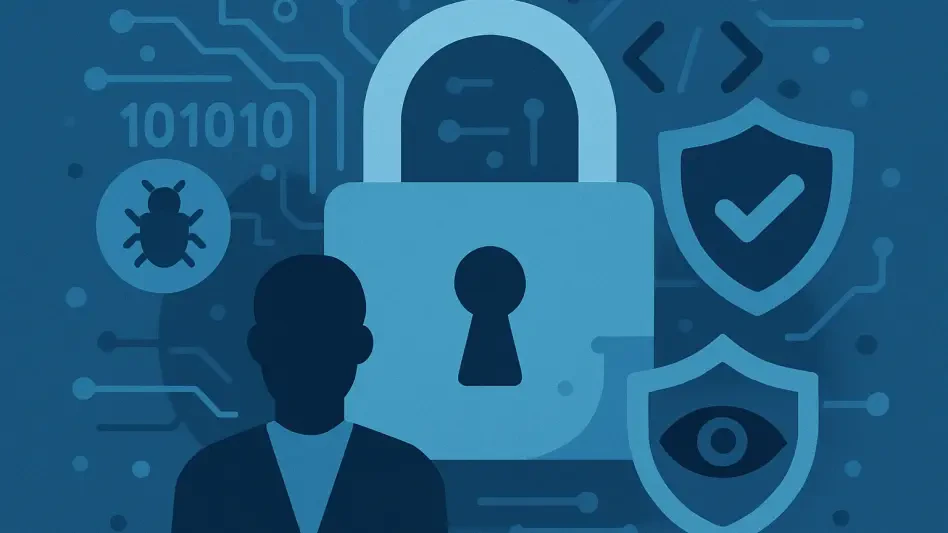Cybercriminal activities have evolved significantly, targeting cryptocurrency investors, corporations, individuals, and even government institutions. These criminals use advanced voice phishing tactics and data breaches to execute their schemes. This article delves into the operational methods of these cybercriminals, the impact on victims, and the misuse of legitimate services to perpetrate these crimes. It also highlights regulatory loopholes being exploited and the broader response from various entities to combat these cyber threats.
The Rise of Voice Phishing Tactics
Leveraging Legitimate Services
Cybercriminals are increasingly using legitimate services from tech giants like Apple and Google to initiate unauthorized communications with unsuspecting victims. These tactics include sending emails, automated phone calls, and system-level messages to users’ devices, creating an illusion of legitimacy. The criminals execute sophisticated social engineering strategies, often involving several roles: a caller, an operator, a drainer, and the owner overseeing the scam. Such elaborate orchestration makes it difficult for victims and authorities to trace the operation back to its source. The growing sophistication of these scams signifies a shift in cybercrime, where technology and social engineering intertwine to create a potent threat.
The use of legitimate services adds a layer of authenticity to the criminals’ approach. Victims are more likely to trust communications that appear to come from well-known tech companies, leading them to let their guard down. This trust is manipulated through various means, including spoofed caller IDs, emails mimicking official correspondence, and even fake notifications that appear directly on the user’s device screen. In some cases, cybercriminals hijack existing communication channels, adding another level of deception. Such advanced tactics underscore the necessity for constant vigilance and advanced security measures on the part of tech companies and users alike.
Sophisticated Social Engineering
The social engineering techniques employed by these criminals are highly advanced. They manipulate victims into revealing sensitive information by impersonating trustworthy entities. This manipulation often involves creating a sense of urgency or fear, making it difficult for victims to think critically about the situation. The criminals’ ability to mimic legitimate communication channels adds to the complexity of these scams. For instance, they might call a victim, threatening account suspension or legal action if immediate steps are not taken. This fear-induced scenario forces many victims into complying with the fraudsters’ demands, often revealing crucial private information in the process.
This level of social engineering is not only about scaring the individual. Cybercriminals also play on emotions such as greed or the promise of an easy financial gain. They might send phishing emails promising huge returns on cryptocurrency investments, urging victims to act quickly to seize the “opportunity.” These fraudulent messages are carefully constructed, often incorporating the same branding, language, and design as authentic communications from reputable institutions. By leveraging these psychological tactics, cybercriminals enhance the effectiveness of their schemes, leading to substantial financial losses for the victims. Understanding and countering these sophisticated tricks is critical in the ongoing battle against cybercrime.
Case Studies of Cybercrime
Tony’s Ordeal
One notable case is Tony’s ordeal, where he lost more than $4.7 million in cryptocurrencies due to a sophisticated phishing scam. The phishing kit used closely mimicked the interfaces of authentication providers, deceiving Tony into revealing his credentials. This case highlights the severe financial losses that can arise from these scams and the elaborate roles played by scammers to carry out their heists. Cybercriminals often set up intricate back-end processes; the stolen credentials were quickly used to drain Tony’s accounts before he even realized what had happened. The rapid pace at which these crimes occur leaves victims with little recourse once the funds are transferred out of their control.
Tony’s experience is not an isolated incident. The growing number of similar occurrences indicates a broader trend wherein cryptocurrency investments are becoming prime targets for cybercriminals. The anonymity and decentralization of blockchain technology make it particularly attractive for illegal activities, leaving authorities scrambling to develop effective countermeasures. Tony’s case also underscores the importance of advanced security education for cryptocurrency investors, emphasizing the need for vigilance and robust authentication processes. As phishing kits become more sophisticated, even seasoned investors may find themselves vulnerable to these well-crafted deceptions.
Other case studies reveal similar patterns of deception and financial loss. Victims are often manipulated into providing sensitive information through seemingly legitimate prompts and notifications. These stories underscore the emotional and psychological toll on victims, who are left dealing with significant financial and emotional impacts. For instance, an individual may receive a call supposedly from their bank, informing them of suspicious activity on their accounts. Under the guise of protecting the victim, the scammer then tricks the person into divulging security codes or transfer authorizations, leading to swift and irreversible financial theft.
The psychological impact on victims is profound, as they grapple with feelings of betrayal, helplessness, and financial instability. Moreover, the recovery process is often prolonged and fraught with additional stress as victims navigate legal and financial institutions to report the crime and seek redress. The recurring patterns in these scams highlight the need for more robust and widespread educational efforts to inform the public about the sophisticated tactics used by modern cybercriminals. Effective communication on how to identify and avoid such scams is vital in mitigating the personal and financial damages that continue to affect a broad swath of society.
Technical Exploits and Data Breaches
Cracked Software Utilization
Cybercriminal gangs often use cracked versions of sophisticated software applications, such as Acunetix, to exploit vulnerabilities in websites. These tools allow criminals to identify and exploit security weaknesses, leading to large-scale data breaches. The stolen data is then resold on illicit platforms, further emphasizing the misuse of cracked software to facilitate these breaches. Such software provides cybercriminals with the ability to conduct thorough scans of network defenses, finding and exploiting unpatched vulnerabilities with ease. The sophistication of these tools means that even novice hackers can pose serious threats when armed with such applications.
Beyond just exploiting technical vulnerabilities, cybercriminals also employ cracked software to bypass security measures put in place by legitimate service providers. For instance, they might use keyloggers to capture login credentials or plant malware that siphons data over time. These breaches often go undetected for extended periods, allowing criminals to gather substantial amounts of sensitive information without arousing suspicion. The capabilities offered by cracked software make it a formidable tool in the arsenal of cybercriminals, necessitating stronger cybersecurity measures and vigilance by organizations and individual users alike.
Resale of Stolen Data
The resale of stolen data on illicit platforms is a common practice among cybercriminals. This data can include personal information, financial details, and other sensitive information. The availability of such data on the dark web poses a significant threat to individuals and organizations, as it can be used for further criminal activities. The dark web marketplace is a thriving ecosystem where everything from credit card details to complete identity profiles can be bought and sold with relative anonymity. This underground economy is supported by cryptocurrencies, which facilitate untraceable transactions, further complicating efforts to trace and prosecute cybercriminals.
The consequences of data breaches extend far beyond the initial theft. Victims of such breaches may find themselves the target of additional scams or identity theft long after the original crime. For organizations, data breaches can lead to significant reputational damage, loss of client trust, and substantial legal and financial penalties. The monetary value derived from the resale of stolen data incentivizes continuous and aggressive cybercriminal activities, highlighting the critical need for comprehensive data protection strategies and user education on best practices to safeguard personal information.
Cryptocurrency Exploits
Regulatory Challenges
Fraudulent actors often escape regulatory crackdowns by exploiting loopholes in the system. They siphon significant sums via cryptocurrency exchanges, taking advantage of the anonymity and lack of stringent regulations in the cryptocurrency market. This section discusses the challenges faced by regulators in keeping up with the fast-evolving techniques of these criminals. The decentralized nature of cryptocurrencies presents inherent regulatory challenges, as they operate beyond the control of any single governing entity. This lack of oversight makes it difficult to establish uniform guidelines and enforce compliance on a global scale.
Moreover, the rapid adoption and innovation within the cryptocurrency space often outpaces the regulatory frameworks in place, giving criminals ample opportunities to devise new methods of evading detection. While some countries have made strides in developing comprehensive regulations, disparities in international regulatory standards create inconsistencies that criminals exploit. The anonymity afforded by cryptocurrencies further complicates efforts to trace illicit transactions, necessitating more sophisticated and cooperative international regulatory measures to counteract these evolving threats.
Case Examples
Several case examples illustrate how cybercriminals have successfully exploited cryptocurrency exchanges. These cases highlight the need for more robust regulatory frameworks to prevent such exploits and protect investors from significant financial losses. For example, a notable incident involved a large-scale hack on a cryptocurrency exchange where hackers used sophisticated malware to bypass security measures and siphon off millions in digital assets. The funds were then laundered through a network of anonymous wallets, making them virtually untraceable and unrecoverable.
Such cases underscore the vulnerability of cryptocurrency exchanges and the crucial need for advanced security protocols. They also highlight the necessity for collaboration between technology providers, regulatory bodies, and law enforcement agencies to devise comprehensive strategies to detect and mitigate these threats. Implementing stringent Know Your Customer (KYC) and Anti-Money Laundering (AML) regulations, along with real-time monitoring systems, can help bolster defenses against these sophisticated attacks and protect investors’ assets from falling into the wrong hands.
Psychological Manipulation Tactics
Emotional and Psychological Tactics
Cybercriminals use emotional and psychological tactics to manipulate victims. By impersonating trustworthy entities such as Google and Apple, they create a false sense of security and authenticity. Misleading prompts and notifications are designed to elicit sensitive information from victims, making it nearly impossible for everyday users to distinguish between real and fake communications. This deception often takes the form of urgent notifications, security alerts, or enticing offers that prompt immediate action without giving the victim time to verify the legitimacy of the request.
The psychological manipulation plays on fundamental human emotions such as fear, curiosity, and greed, making these scams particularly effective. Victims may receive an email or phone call claiming that their account has been compromised and that urgent action is needed to restore security. The fear of losing access to important accounts or financial assets drives many to comply with the scammers’ demands without thorough scrutiny. This emotional leverage, combined with the appearance of authenticity, makes these tactics extraordinarily effective in extracting valuable information from victims.
Impact on Victims
The impact on victims is profound, with many experiencing significant financial and emotional distress. The erosion of trust in digital communications and transactions is a growing concern, as more individuals fall prey to these sophisticated scams. Victims often report a lasting sense of vulnerability and betrayal, as well as significant financial losses that can affect their livelihoods. The emotional toll includes stress, anxiety, and a sense of powerlessness, which can have long-term effects on mental health and overall well-being.
The fallout from these scams extends beyond individual victims. Businesses and institutions that suffer data breaches or financial losses due to phishing attacks can face considerable reputational damage and erosion of customer trust. The fear of falling victim to such scams can also lead to hesitancy in adopting new technologies and participating in digital economies, impacting the overall growth and innovation within these sectors. Addressing the psychological impact of these crimes is paramount in developing comprehensive support systems and education initiatives for those affected.
Abuse of Legitimate Services
Exploiting Tech Giants
Cybercriminals exploit vulnerabilities or legitimate functions of services provided by tech giants to propagate their scams. For example, the misuse of functionalities like Google Forms for phishing purposes reveals an oversight in service implementations. This section explores how these legitimate services are being misused and the implications for users. Cybercriminals manipulate existing tools to craft convincing phishing schemes, exploiting the trust people place in widely used platforms. The dual-use nature of these services—their legitimate use versus their exploitation for nefarious purposes—creates a significant challenge for tech companies striving to balance accessibility and security.
The exploitation of these services often involves sophisticated techniques such as URL masking, where malicious links appear to be from legitimate sources, and automation tools that distribute phishing attempts on a massive scale. This creates significant challenges for tech companies in monitoring and preventing misuse without adversely affecting the user experience. As cybercriminals continue to find new ways to exploit these platforms, tech giants must continually adapt their security measures to safeguard users from these evolving threats. Increased awareness and user education are also essential in helping individuals recognize and avoid such scams.
Oversight in Service Implementations
The oversight in service implementations by tech giants allows cybercriminals to exploit these services for their gain. This section discusses the need for improved security measures and oversight to prevent such misuse and protect users from falling victim to scams. Despite ongoing efforts to enhance security, existing implementations often leave gaps that cybercriminals can exploit. Ensuring comprehensive security oversight involves not only technical measures but also regular audits, user education, and collaboration with law enforcement to identify and shut down illicit activities swiftly.
Tighter integration of security features such as multi-factor authentication, advanced threat detection algorithms, and user reporting mechanisms can help mitigate these risks. Additionally, fostering an environment of transparency and open communication with users can enhance overall security awareness and responsiveness to potential threats. By continuously refining their service implementations and proactively addressing vulnerabilities, tech giants can significantly reduce the opportunities for cybercriminals to misuse their platforms. This proactive stance is essential in cultivating a safer and more secure digital environment for all users.
Regulatory and Policing Challenges
Inefficiencies in Current Regulations
Despite regulatory measures, the growing trend of cybercrimes continues to pose significant challenges. This section highlights the inefficiencies in current regulations and the global challenges in prosecuting cross-border cybercrimes. The narrative includes insights into specific arrests and ongoing investigations by authorities, such as the arrest of U.S. Army soldier Cameron Wagenius. Regulatory frameworks often struggle to keep pace with the rapid evolution of cyber threats, creating gaps that cybercriminals exploit. Jurisdictional issues further complicate the enforcement of laws against cybercrime, as these activities frequently cross international boundaries, necessitating coordinated global responses.
Efforts to address these regulatory inefficiencies include harmonizing laws across different jurisdictions, enhancing international cooperation, and investing in advanced investigative technologies. However, the decentralized and anonymous nature of many cybercrimes poses inherent challenges to these initiatives. The arrest of individuals involved in such activities highlights the importance of continuous advancements in cybersecurity measures and legal frameworks. Developing more agile and comprehensive regulations can improve the ability to prevent, detect, and prosecute cybercriminal activities effectively, ensuring a more secure digital landscape.
Global Jurisdictional Issues
Cybercriminal activities have seen considerable evolution, increasingly targeting not only cryptocurrency investors but also corporations, individuals, and even government institutions. These criminals employ sophisticated voice phishing tactics and execute data breaches to carry out their schemes. This article explores the operational methods of modern-day cybercriminals, the devastating impact on their victims, and how they misuse legitimate services to facilitate their crimes.
One common tactic is voice phishing, also known as vishing, where scammers use phone calls to trick people into revealing sensitive information. Additionally, data breaches are a significant concern as they involve unauthorized access to databases, leading to the theft of personal and financial information. Cybercriminals often manipulate regulatory loopholes, allowing them to exploit weak points within systems and evade law enforcement.
The article also sheds light on the broader response from a range of entities, including governmental bodies, private organizations, and cybersecurity firms, all working tirelessly to counteract these threats. There is a growing emphasis on enhancing security measures, closing regulatory gaps, and raising public awareness about the latest cyber threats and how to avoid them.
In conclusion, the increasingly sophisticated tactics used by cybercriminals present significant challenges for individuals and institutions alike. However, through concerted efforts and collaboration among various entities, there is a continuous push to strengthen defenses and safeguard sensitive information against these evolving threats.







